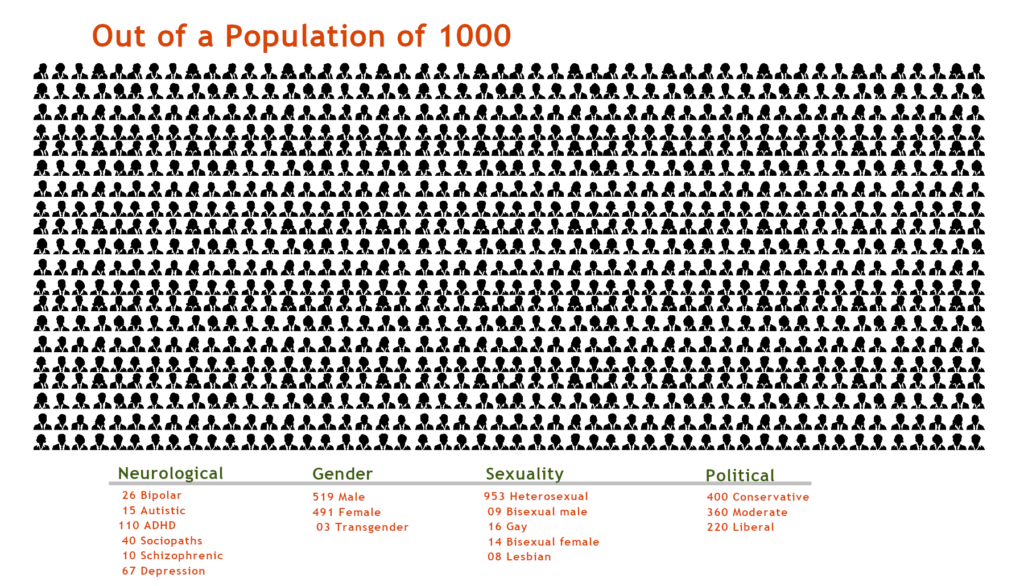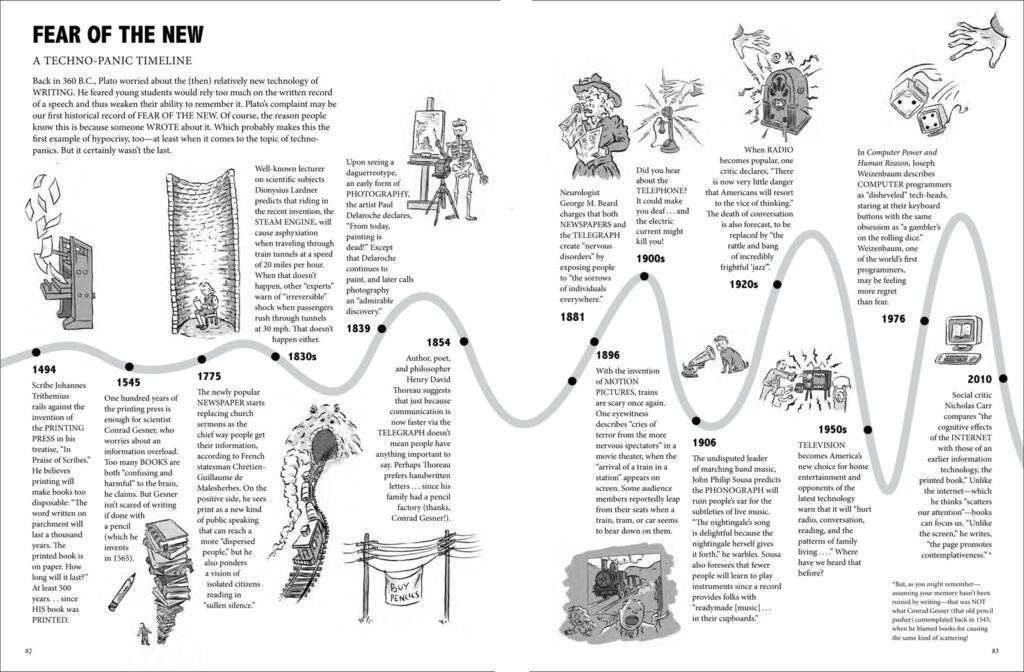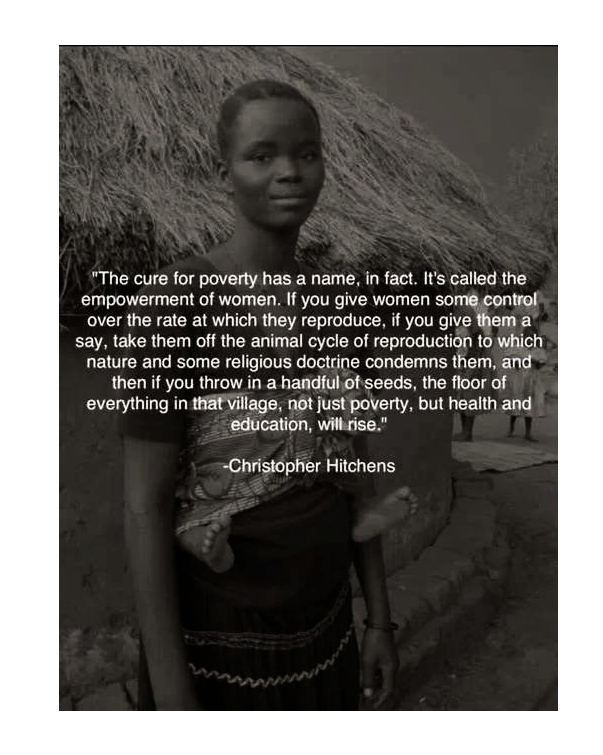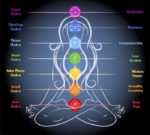Human:Nature
This is a broad category, inclusive of any global behaviors.
We are every bit as natural as Blue-Green algae or Pterodactyls but we can’t accept that. We hold unshakable convictions on what people are and how people should behave yet in the face of perpetual disappointment we are mystified. Perhaps humans are like every other animal: Living out an innate strategic script with limited degrees of freedom from it.
This is the composition of the American population grouped by important neurological, sexual, and political “realities”. These people are active ingredients in their standard amounts in the recipe that produces human communities. This is a recipe (or at least a list of ingredients and amounts) for reality as we know it. You can not leave out or thoughtlessly replace any ingredient is a standard recipe and have success. We can think about any food recipe and with only our common sense, understand why that ingredient was essential and why its absence ruined the result.
Look at this with that simile in mind.
Neurology, Gender, Sexuality, and Politics.
Each variation is a distinct frequency of reality and behavior. Each frequency affects those around it. When all these measured types are present at once we have a larger meta-frequency generated from this synthesis. The harmony of the choir when each singer is hitting their note.
This aggregate of differences is the blueprint for a human community. These percentages are unchanging, year after year. This is the consistency of us as a collective generated by the soulful, longing, hard slogging individual lives we lead. There are a lot of roles being played here that support community health and success. This is the diversity of a healthy biome. The tent could collapse if the percentages wandered far enough out of balance. Too much or too little could cause problems comparable to a pudding that won’t set or is too thin or thick. An imbalance could mirror a PH imbalance that stops the bread from rising. Continue reading
We have two very predictable responses to new technology.
- Superstitious terror
- Unquestioning acceptance
This chart nicely supports and reinforces the existence of this pattern.
There is a sociological model breaking down the details of acceptance, it’s called the technology adoption life cycle.
Remember, my theory is that humans have a symbiotic relationship with technology. With technology, we develop powerful evolutionary mutations that create new human subspecies. These subspecies are transformed powerful upgrades. For example, weather-resistant clothing extended our range into cold areas, spears, arrows, and organized hunting made us singularly efficient, deadly predators. Cars expanded our range by hundreds of miles around our communities. Broadcast technology made us instantly aware of world events and able to “discuss” them in our millions in real-time.
The Superstitious terror response is the various recent tech mutations defending their sub-species territory and advantages and arguing against abandoning these in favor of some untested cockamamie nonsense.
The Unquestioning acceptance response is partly the deep species knowledge of having been made safer and more powerful countless times by saying yes to this deal and also the certain knowledge that they will be vulnerable to destruction by other tribes of humans who embrace the mutation if they don’t.
(I cannot find an artist attribution for the chart.)
Psycho comes from the Greek word psykho, which means mental. The Greek root word path can mean either “feeling” or “disease.” So psychopath is a word meaning “mental illness”. “Sociopath” is not a clinical term and it is a no-no for mental health professionals to use it. However, I am NOT a mental health professional, and the name is rather on point about the issue: Sick towards society, towards people. In the 1830’s this disorder was called “moral insanity.” By 1900 it was changed to “psychopathic personality.” More recently it has been termed “antisocial personality disorder” in the DSM-III and DSM-IV.
DSM-IV Definition: Antisocial personality disorder is characterized by a lack of regard for the moral or legal standards in the local culture. There is a marked inability to get along with others or abide by societal rules.
It’s easy to take the DSM on faith at face value as sufficient authority to settle the issue of who is or isn’t thoroughly, but the needs of the mental health community and others who have to deal with psychopaths don’t line up perfectly. The DSM criteria depend heavily on observed behaviors while law enforcement and criminal justice must often predict behavior based on personality characteristics. Continue reading
Gender study finds 90% of people are biased against women
A new UN report has found at least 90% of men and women hold some sort of bias against females. The “Gender Social Norms” index analyzed biases in areas such as politics and education in 75 countries. There are no countries in the world with gender equality, the study found.
Pedro Conceição, head of UNDP’s Human Development Report Office said: “We have come a long way in recent decades to ensure that women have the same access to life’s basic needs as men. But gender gaps are still all too obvious in other areas, particularly those that challenge power relations and are most influential in actually achieving true equality. Today. the fight about gender equality is a story of bias and prejudices.”
- Globally, close to 50% of men said they had more right to a job than women. Almost a third of respondents thought it was acceptable for men to hit their partners.
- Zimbabwe had the highest amount of bias with only 0.27% of people reporting no gender bias at all. At the other end of the scale was Andorra where 72% of people reported no bias.
- In Zimbabwe, 96% of people expressed a bias against women’s physical integrity – a measure covering support for violence against women and opposition to reproductive rights. In the Philippines, 91% of people held views that were detrimental to women’s physical integrity.
- According to the report, about half of the world’s men and women feel that men make better political leaders.
- In China, 55% of people thought men were better suited to be political leaders.
- Around 39% of people in the US, which is yet to have a female president, thought men made better leaders. Globally, 40% of people thought men made better business executives. In the UK, 25% of people thought men should have more right to a job than women and said men made better business executives than women did. In India, that figure was 69%.
Share of seats in parliament held by women
| Region | Percentage |
|---|---|
| Arab States | 18.3 |
| East Asia & Pacific | 20.3 |
| Europe & Central Asia | 21.2 |
| Latin America & the Caribbean | 31 |
| South Asia | 17.1 |
| Sub-Saharan Africa | 23.5 |
Part 1. There is no clean break between stories lived, dreamed, or told.
Our world is a measureless ocean of stories. Some are untouchable, uneditable, unmeeting parallels, distant in space/time. Some are sliding intimately through and around each other, mutually editing in motion.
We are stories who sprout further stories. Each of us is a tale partly told. We are suspenseful and unfinished. We are story-birds and every feather, large or small is someone or something else. Every chance meeting, ambition, fear, and plan is a story within our story. We are narrative fractals. Particles to self-observation, waves to outsiders. We all have public stories that we wear like expensive coats and secret stories in our silent flesh like pearls or tumors. Intimacy invites the listener or reader inside, then downward, past the public exhibits into the little-seen rooms and closer to the story you wouldn’t even know how to tell another person. Some are so private we don’t even grant ourselves clearance. Out of loyalty, pride or fear, some tales serve life sentences in solitary confinement, dying alone in the heart of the only witness.
To hear a story is to be offered a ride in it with an option to buy. Each telling generates new participants and versions. Stories are medicine, though whether they are magical elixir, placebo or poison is determined mostly by the state of the listener. To know something is to tell it to yourself, and hear it permanently.
The branching stories of our local neighborhoods mingle and tangle with those of our family, friends, loves, and enemies; familiar as those childhood streets until they fade in the gray distance of untold strangers.
Once upon a time…
Stories are the universal means to humanity’s ends. Stories are the acid test proof of humanity the species. They are the medium of culture, family, battle-plans, jokes, memes, and inventions. We could not conduct any of our signature business without them.
Therefore, to imagine a time of people before there were stories is sheer, well… fiction. No such animal existed. After our last common ancestor, there were wicked smart primates of many kinds, but the first people and the first stories are simultaneous, mutual creations, creating each other. The outside borders of humanity are where the stories cut off suddenly in the vacuum-like silence of animals*, plants and the great unknown. We exist in an atmosphere of exhaled and inhaled narrative. In the beginning…was the beginning.
The System:
Shared Narrative is the economy of human activity and stories are the coin. Underlying any economy is an agreement about how it works and the recognition of common units of exchange. A system of exchange must be understood well enough to be taken for granted.
In the narrative economy, I believe this means that the story elements used in a tale being told by A initiate a request inside the listener, B, to load their corresponding copy of that element in order to recognize meaning. We must each have our own copy of ABC or the alphabet wouldn’t work.
A narrative structure in the telling must match up with a corresponding structure in the listening. These elements must land, like drug or scent molecules, on matching neuroreceptors. If not, drugs would have no predictable common effect on us and we couldn’t say things like: “Is that cigarette smoke I smell?” We easily refer to the smell of fall leaves, wet dog, or shit because we can take the same recognition system for granted. Continue reading
Humans are in a symbiotic relationship with another species. Without this relationship, modern people would not exist.
The only thing that really separates us from other species is our shapeshifting survival strategy. Most animals have a survival strategy that sets like concrete into a virtual job description. The job description includes what food you eat, how you acquire it, how you shelter, mate, and raise young: A strategy.
Survival strategies are like an idea that grows into an organism. The organism fully commits to the idea by adapting; physically becoming the technology (the claws, teeth, running muscles, etc.) needed for the job. These adaptations improve success within the strategy but it’s like evolving into a corner. It’s like gambling the house on your betting system.
Humanity substitutes tools for adaptations, we don’t morph into a specialized form and narrow down. Tool use isn’t exactly what separates us though. There are numerous “generalist” species such as birds and other primates that cleverly use tools. The difference is that these species are elegantly solving problems posed by tasks in their job description and surviving better as a result, but never innovating to the extent of “leveling up” to a different job.
We have a sort of default simple job of walking around in a group picking up food. We have a second sense for noticing useful stuff and trying it. It’s as simple as understanding that that stick will help us knock down more fruit. When faced with more complicated problems like catching fish, we try all sorts of half-assed ideas before getting a flash of insight like damming up the far end of the pool in the stream to trap the fish for easier capture. Continue reading
I don’t believe Chakras are the literal mystical energy centers believed in by new age people. I also don’t believe they are the nonsensical-fantasy-things-that-don’t-really-exist, as believed by nearly everyone else.
Chakras are symbolic foci for real aspects of our selves, our sub-selves, the parts of your overall whole being. They are defined as 7 modular aspects of self that come on-line by stages as we grow and experience life. They absolutely can be blocked and out of balance, under or overactive. Below is the traditional list though it can vary a bit, they work upward from the bottom of the spine to the top of the head and each is associated with specific areas of our lives, feelings, and personalities. They are distinct color-coded points on the spectrum. But ultimately their functions blend into a healthy, unified self.
- Root – Base of the spine; red; governs survival instincts, grounding.
- Sacral — Lower abdomen; orange; governs sexuality, intuition, self-worth/-esteem.
- Solar Plexus — Upper abdomen; yellow; governs impulse control, ego.
- Heart — Center of the chest; green; governs compassion, spirituality.
- Throat — Throat; blue; governs communication, emotion.
- Third Eye — Between the eyes; purple; governs rationality, wisdom, imagination.
- Crown — Top of the head; indigo; governs connection with the Divine
The Chakras rather neatly mirror Abraham Maslow’s almost universally accepted hierarchy of needs. Notice how the artist used defining colors for different levels.
Compare the Hierarchy of Needs: 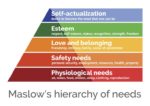
- Physiological needs
- Safety needs
- Social belonging
- Self-esteem
- Self-actualization
- Transcendence
(There are somewhat alternative versions as well.) If a sub-self is broken at the physical safety level, of the self-confidence level, for example, self-actualization is blocked. The person experiences various psychological symptoms expressing the fears and frustrations of lack and instability in those areas of life. The chakras and the H of N chop up the human pieces a little differently and each one tilts a bit toward the surrounding belief system that hatched it. Still, it is the same invention, spontaneously cropping up to fill the same need for vastly different communities.
The invention is a simple map of the human soul and what it needs to thrive. It describes the places we can break down and suggests a course of treatment.
The Chakras and Maslow’s Hierarchy of Needs also dovetail nicely with Carl Jung’s Individuation, the challenging synthesis of becoming a complete, integrated person.
I’ll be writing here soon about some original and creative ways I’ve recently found to work with this material but I think this overall idea is interesting enough to consider on its own.
William James was an intellectual swashbuckler and daring psychological pioneer. In his essay “Subjective Effects of Nitrous Oxide” he wrote about the signature experience of that drug:
“With me, as with every other person of whom I have heard, the keynote of the experience is the tremendously exciting sense of an intense metaphysical illumination. Truth lies open to the view in depth beneath depth of almost blinding evidence. The mind sees all the logical relations of being with an apparent subtlety and instantaneity to which its normal consciousness offers no parallel;”
During one such nitrous oxide experiment, he experienced an ecstatic revelation of universal truth and wrote it in his journal:
“Overall there is a smell of fried onions“.
(From the same essay) “…only as sobriety returns, the feeling of insight fades, and one is left staring vacantly at a few disjointed words and phrases, as one stares at a cadaverous-looking snow peak from which sunset glow has just fled, or at a black cinder left by an extinguished brand.”
The common-place take away from this is that your big mystical moment is just hooey; That all such revelations are delirium, a waste of time, self-indulgent or worse. I disagree, I think we must pull back the camera and consider the ecstatic mind and ordinary mind together without bias. After all, the ordinary mind is like a common plant and ecstasy like an astonishing flower blooming there.
Ecstacy is always elusive and in short supply. It is also a round trip ticket. However we achieve it, we have to let go and return from it to the ordinary world as if “Whatever goes up, must come down” applied equally to thrown rocks and inspiration. For every peak experience, there is a descent. Ecstacy is like glowing white heat before some entropy cools us back down to room temperature. While the comparison seems fair, it also muddies the issue. Why would gravity and entropy be natural behaviors of the mind? Why would feeling and thinking obey a physics engine? I think this gravity/entropy inside us (the force that brings down whatever goes up) is our inevitable return to the social world where we conduct all business with each other. We surface here if submerged and land here again after being uplifted. This is the homeostatic balance point of our kind, our default neurological coordinates.
Extreme highs and lows aren’t conducive to social intercourse, business, or survival. These default settings are like the central area of the human Venn chart, where we overlap enough to “act normal” with a shared sense of what that means. This is the flat behavioral X-axis of predictability. The social self defines the normal mind. The part of us that worries over the impression we make and strives to get along with others…the set point of NORMAL. A person at the ecstatic top or brutal bottom of the behavioral Y–axis is out of sync with the herd. They might destabilize the behavioral algorithms that promote survival.
This is a clear sign that our genes understand us primarily as social beings who must obey the “traffic laws” of the group. “Team players” have personality differences, private thoughts, and secrets but their main job is: Obey the group survival algorithms. If I’m right about this, many people would be hostile toward anything that moves a person too high or low on the behavioral Y-Axis, whether up toward lofty ecstasy or down below inhibitions. Ecstacy allows a person to see through rigid cultural rules and roles, and possibly even giggle at them. Shame, guilt, and fear of social disapproval might lose their power to control people who’ve looked down from too great a height.
The normal mind is moralistic and biased against anything ecstasy has to say. The normal mind is social. It cooperates with the other normal minds to define and police social behavior. A communications matrix of shared concepts, language, and symbols forms. It connects and surrounds the group like a membrane or skin. I call it Flatland.
Flatland
The social web of normal life is linguistic, composed of words and concepts: They are the building blocks and connective tissue. It is a virtual environment, rather like an operating system. The human community is so completely contained within this verbal\conceptual structure that few even notice that it exists. We don’t see our communications matrix just as fish don’t notice water. Within this domain, we don’t usually feel mentally limited or cramped but only those realities that can be sealed inside words or concepts can exist here. These can be considered, shared and exchanged, but like a nerd’s action figures, only if still sealed in the original container. Flatland is a reality composed of things with no objective reality, it is equally Plato’s Cave and Keanu’s Matrix. We weave it together and alone like a tea-cozy set over the nakedly objective world.
Even though these words, concepts, and the logic substrate they bind to are purely abstract human inventions and not objective clumps of matter, if something falls confusingly outside our thought domain we challenge its existence, even the possibility of it. These symbolic scrabble tiles of meaning are where our species is compelled to restrict reality. We nest inside our conceptual nutshells. Individually we narrow ourselves still further by accepting only tiles we generally care about, in areas such as religion, science, politics, or economics. Intense social pressure to share the same religious, political and economic scrabble tiles as the local community shrinks our collection down to a small handful. These are often compulsory tiles but even the knowledge that they are compulsory is often masked behind how automatically and transparently we blend with the core beliefs wherever we are born. In this realm flags are countries, and symbols are literal vessels or instances of what they symbolize. The simpler a person is the less they can distinguish between the name and the thing with that name. “They can’t tell the difference,” Alan Watts said, “between the map and the territory”.
Flatland vs Ecstacy
Flatland rules can only interpret an ecstatic experience of deeper truth as an almost magically powerful concept artfully composed of words. But words and concepts are at least partly about maintaining a respectful distance from reality and staying in the tribe. Words lack the inherent volatility and potential energy to combust and achieve escape velocity from Flatland. There is no phrase that contains power in itself. The something or nothing that happens when it is spoken depends completely on the nature and preparation of the person hearing it. Brilliantly mixed, words can electrify but even then their power can’t touch the hearts of people who aren’t in the mood to care. Words rely on us to provide our own catalytic enthusiasm, and without it, words simply drone, mumble and fall mute.
This is our POV as we consider the phrase: “Overall there is a smell of fried onions” in the context of “Things to Know about Reality”.
It’s a ridiculous, goofy, philosophical fortune cookie message. If this is the voice of so-called mysticism or transcendent experiences then that voice is a joke. Its scrabble tiles have been caught in the spotlight of rational truth and recognized as useless garbage. Anyone arriving at a different conclusion is objectively considered an idiot.
Flatland is our cultural, linguistic, and rational Möbius strip reality…it is the box we don’t think outside of. If we did think outside of it we’d just shrug and go back in.
Here is William James again:
“No part of the unclassified residuum [of human experience] has usually been treated with a more contemptuous scientific disregard than the mass of phenomena generally called mystical. Physiology will have nothing to do with them. Orthodox psychology turns its back on them. Medicine sweeps them out; or, at most, when in an anecdotal vein, records a few of them as “effects of the imagination”–a phrase of mere dismissal, whose meaning, in this connection, it is impossible to make precise. All the while, however, the phenomena are there, lying broadcast over the surface of history.”
There’s more to the story (than the story)
This time it’s personal
–“New Organs of Perception come into being as a result of necessity. Therefore O man, increase your necessity, so that you may increase your perception.” Sufi wisdom–
I told you all that, so I could tell you this. A few months back I began experiencing a spiritual awakening. It began with an emotional crisis so intense that it broke the fourth wall of a hitherto invisible spiritual dimension. A hole was torn in the sky over my part of Flatland and I saw a bit of what is outside the box.
My need for a breakthrough and the relief of a deeper perception was so intense and painful that it was exactly as if that increased necessity gifted me with enhanced organs of perception. What I saw and experienced then was a remarkable gift to me and is still improving and deepening my life. I struggle with shame to find the courage to tell you some absurd things about the universe that were revealed to me. What I saw is profoundly real but composed of utter nonsense if observed from the view-port of Flatland. That is not a functional lens for things that are …outside.
There is an extra helping of reality on our plate. It is exactly where all the other reality is, overlapping and interpenetrating our dimension. Our only distance from it is perception. Perceiving it is based upon readiness which is natural in some and discovered eventually by others… my perception of it waxes and wanes…it comes and goes like a faraway late-night radio signal. It contains beings I cannot define for you save that they are well beyond my ken, that they are driven completely by love and concern for all evolution toward intelligence, love, and freedom. The universe is full of love which is undetectable from Flatland.
–“How should I reveal to you that last night in the tavern, intoxicated and unsteady as I was, great good tidings were brought to me by the angel of the hidden world?” – Hafiz–
So what about the fried onions? What about the “wisdom” we bring back that dissolves into foolishness upon review?
A peak experience of spirit is a bit like going on one of the early NASA “pop-gun” space flights without any astronaut training (or warning).
It is a quantum jump from a realm where only words, concepts, and connecting logic are believed to be real, and Occam’s razor is the universal solvent applied to mysteries, to a blatant contradiction of all that. You are suddenly madly out of your depth and inexplicable beings are communicating deep messages. Thrust into a staggering reality that isn’t made of concepts and words we have no choice but to jam the experience into our concepts and words machine to describe it…even to ourselves. We may try with all our strength to shove that reality into some of our boxes but as the experience floods us, no word is that much more useful than another, and all are misshapen. None of our coins fit the slot. We try to capture dragons in cricket cages because cricket cages are all we can bring through customs as we return to Flatland.
No fundamentalist of any faith or discipline truly understands. True mystics don’t fall for the trap of literal thinking. This is why they use fairytales, fantasy, and humor. To retain the truth received outside of Flatland we must be changed by it. To be changed by it makes Flatland visible to us, and distances us internally from the intensity of the symbols drawn on the scrabble tiles that make up every inch of our common ground with the rest of the human beings.
Know, don’t tell
This hard biscuit has been talked about, but only to say how futile and unreal it is to merely talk about it.
“The Tao that can be told is not the eternal Tao.
The name that can be named is not the eternal name.
The nameless is the beginning of heaven and earth.
The named is the mother of ten thousand things.
Ever desireless, one can see the mystery.
Ever desiring, one can see the manifestations.
These two spring from the same source but differ in name;
this appears as darkness.
Darkness within darkness.
The gate to all mystery.”
― Laozi, Tao Te Ching
The tireless and brave William James gets the last word because he can say it better than I can:
I myself made some observations on . . . nitrous oxide intoxication, and reported them in print. One conclusion was forced upon my mind at that time, and my impression of its truth has ever since remained unshaken. It is that our normal waking consciousness, rational consciousness as we call it, is but one special type of consciousness, whilst all about it, parted from it by the filmiest of screens, there lie potential forms of consciousness entirely different.
TLDR: Ecstacy isn’t disproven by the flat, normal world. The place we return to after ecstasy isn’t REALITY, it’s the human social talk box.

Mean exactly what they sound like: Fear of the new and Love of the new.
They aren’t cute made-up words, they are technical terms from biology. Animal ethologists (they study behavior) coined them because they needed to describe a common trait variation. Within a species, there are individuals who exhibit an openness to novelty. They try different foods, different hunting or mating techniques, for example. This is Neophilia.
The only way we could notice this is against a background of “by the book ” individuals. These are not risk-takers, these are the ones who define “normal behavior “. Whenever an animal’s general survival strategy and behavior is described, it ‘s the story of the Neophobes. But the deeper story is that Neophiles, while they live risky and often unsuccessful lives as individuals are key to survival and evolution.
In fact, it’s likely that that the pattern lived out by the neophobes was initiated by neophiles. First, the neophile may simply hit upon a more successful approach, and thrive. Second, when the species experiences a crisis in food or health or predation, the neophiles are likelier to be “the resistant strain ” that survives. These are the two main reasons for subspecies variations. So if you imagine this heretical thought; that life, rather than being the 100% dumb luck festival of the neo-Darwinians, has strategic algorithms for success, then these observations make perfect sense. Where or how these exist and operate is not my problem here. When patterns predictably exist in nature there are underlying causes to be found. If you follow this blog you know that my vaguely mystical point of view is not pointing to a “god did it ” conclusion and is not content with a “mere coincidence ” explanation.1 Continue reading
“I do not believe in free will. Schopenhauer’s words: ‘Man can do what he wants, but he cannot will what he wills,’ accompany me in all situations throughout my life and reconcile me with the actions of others, even if they are rather painful to me.”
– Albert Einstein

